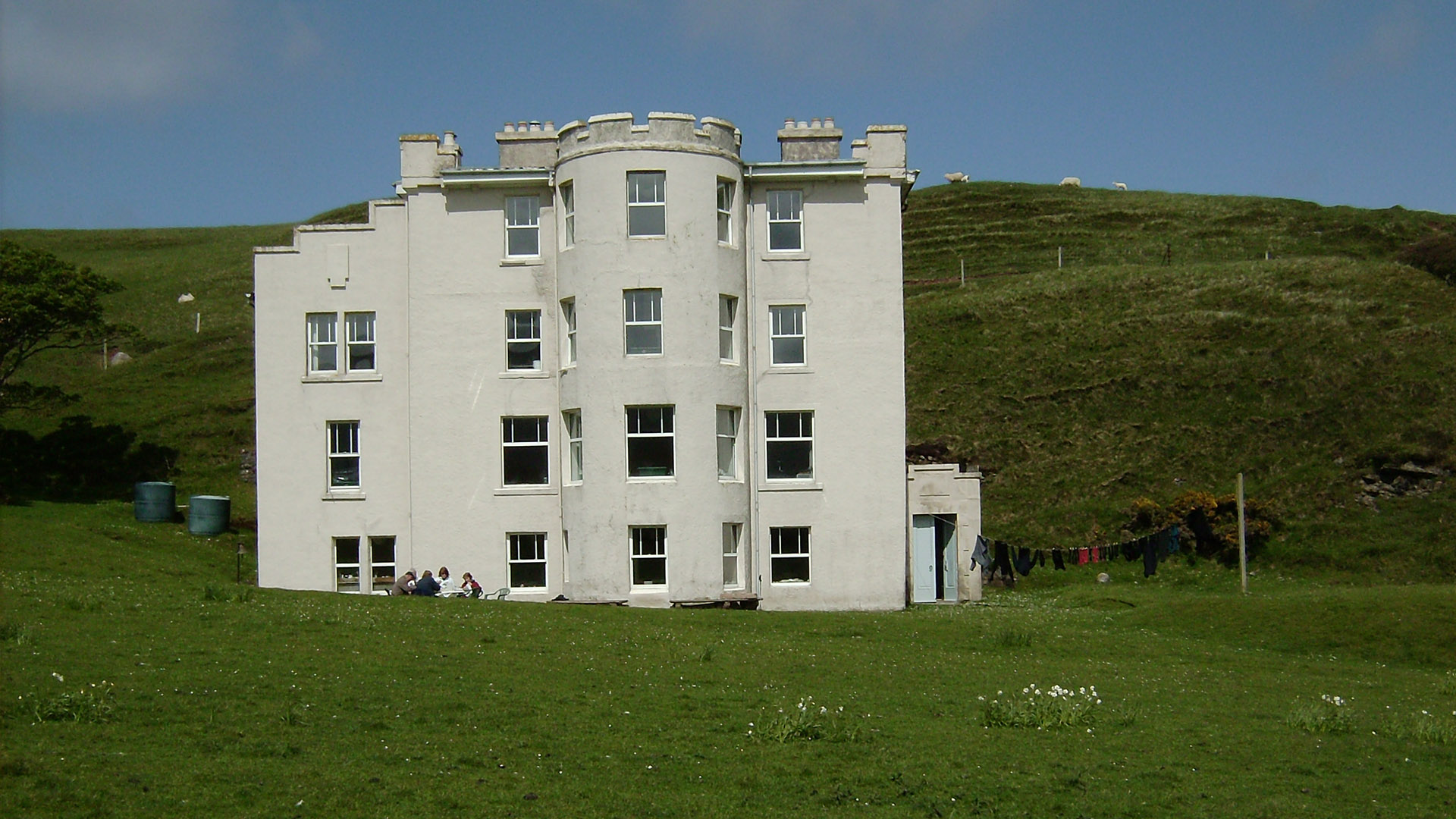Just off the rugged west coast of Mull, nestled peacefully at the entrance to Loch Na Keal, lies the unassuming island of Inch Kenneth. At first glance, its small, grassy expanse and tranquil shoreline suggest nothing more than quiet solitude and picturesque beauty. Yet, beneath this serene exterior lies a history far richer, stranger, and more dramatic than meets the eye. Inch Kenneth is a place where time seems to stand still, but echoes of saints, scholars, clan chiefs, and even notorious 20th-century figures resonate through the centuries.
Accessible only by private boat, this tiny isle, with its unique geology contrasting with volcanic Mull, offers a glimpse into Scotland’s multifaceted past, proving that even the smallest landmasses can hold the most compelling stories.
The Sacred Origins: St. Kenneth and the Medieval Legacy
The island’s very name, “Inch Kenneth” or “Innis Choinnich” in Gaelic, pays homage to its earliest known inhabitant: St. Kenneth (Cainnech of Aghaboe). A contemporary of St. Columba, Kenneth is traditionally believed to have founded a monastic settlement here as far back as the 6th century, establishing Inch Kenneth’s profound sacred roots.
Today, the hauntingly beautiful ruins of a 12th-century chapel stand as a poignant reminder of this early Christian heritage. This site was once considered an important monastic centre for Argyll, possibly second only to the revered Iona. Legends even suggest that Inch Kenneth served as an alternative burial ground for Scottish kings if stormy seas prevented passage to Iona, further enhancing its ancient mystique.
The graveyard surrounding the chapel, in use until the 19th century, is dotted with exquisite medieval grave slabs dating from the 14th to 16th centuries. These beautifully carved stones, many in the distinctive West Highland style, mark the resting places of Maclean clan chiefs and other significant figures, connecting the island deeply to the powerful Highland clans.

The Enlightenment’s Gaze: Dr. Johnson, Mr. Boswell, and Highland Hospitality
Centuries later, in 1773, Inch Kenneth received its most famous literary visitors: the formidable lexicographer Dr. Samuel Johnson and his eager biographer, James Boswell. Their epic “Tour to the Hebrides” brought them to this remote island, where they were warmly hosted by Sir Allan MacLean, the 22nd chief of the Maclean clan, in his island home.
Their stay provided a fascinating snapshot of Highland life during the Enlightenment era. Both men penned detailed accounts of their visit, with Boswell’s “Journal of a Tour to the Hebrides with Samuel Johnson” offering a particularly vivid portrayal of Inch Kenneth and its gracious host. These writings captivated readers across Britain, introducing many to the unique charms and complexities of the Scottish Isles and cementing Inch Kenneth’s place in literary history.
The Songwriter’s Sanctuary: Sir Harold Boulton and the ‘Skye Boat Song’
As the 20th century dawned, Inch Kenneth found a new owner in Sir Harold Boulton. A figure of considerable cultural significance, Boulton acquired the island in the early 1900s and played a role in enlarging the existing house into the comfortable mansion that still stands today.
His most enduring legacy, however, extends far beyond the island’s shores: Sir Harold Boulton is credited with writing the lyrics to one of Scotland’s most beloved and internationally recognized folk songs, ‘The Skye Boat Song’. This connection adds a surprisingly lyrical layer to Inch Kenneth’s already rich tapestry of tales.

The Infamous Chapter: The Mitford Family’s Controversial Retreat
Perhaps the most sensational chapter in Inch Kenneth’s history began in 1938 or 1939, when the island was purchased by Lord and Lady Redesdale, becoming a retreat for their famously eccentric and often controversial children, the Mitford sisters. This period brought the quiet island into the glare of international intrigue.
Central to this era was Unity Valkyrie Mitford, an ardent admirer and personal friend of Adolf Hitler. Following her attempted suicide in Munich upon the outbreak of World War II, Unity was controversially allowed to return to Britain. She spent her final years in relative isolation on Inch Kenneth, grappling with her past until her death in 1948. When the house was later sold by her sister, the communist Jessica Mitford (who famously quipped about turning the island into a “Soviet submarine base”), it was sold fully furnished. This left behind the Mitford family’s personal effects, including astonishing items of Nazi memorabilia, effectively creating a chilling “time capsule” on this remote Scottish isle.

Inch Kenneth Today: A Private Oasis, A Lingering Fascination
Today, Inch Kenneth remains under private ownership, a serene and largely uninhabited sanctuary. It currently belongs to the descendants of Charles Darwin, specifically the family of his great-granddaughter, Yvonne Barlow, who acquired it from Jessica Mitford in 1967.
Despite its rich and dramatic past, the island has returned to its natural state of profound peace. It’s a haven for wildlife, including large numbers of Barnacle Geese and otters. While private, the island’s unique history and untouched beauty continue to fascinate. For those eager to glimpse its extraordinary past, respectful visits can be arranged via charter boat services from Mull, typically operating from Easter to October. These trips offer a chance to walk the hallowed ground, explore the ancient chapel ruins, and reflect on the myriad lives intertwined with this small, compelling piece of land.
Conclusion: The Island That Holds Untold Stories
Inch Kenneth, despite its unassuming size, serves as a remarkable microcosm of Scottish history and human endeavour. From its ancient monastic origins and the echoes of clan chiefs, through the intellectual curiosities of the Enlightenment, to the unexpected connections with a famous songwriter and the unsettling shadows of 20th-century political extremism, the island has borne witness to it all.
It stands as a testament to the fact that some of Scotland’s most compelling and surprising stories are found not in grand cities, but on its quietest, most secluded shores. A visit to Inch Kenneth is more than just a trip; it’s a journey through time, inviting you to connect with the incredible layers of history that continue to whisper across its windswept landscape.

